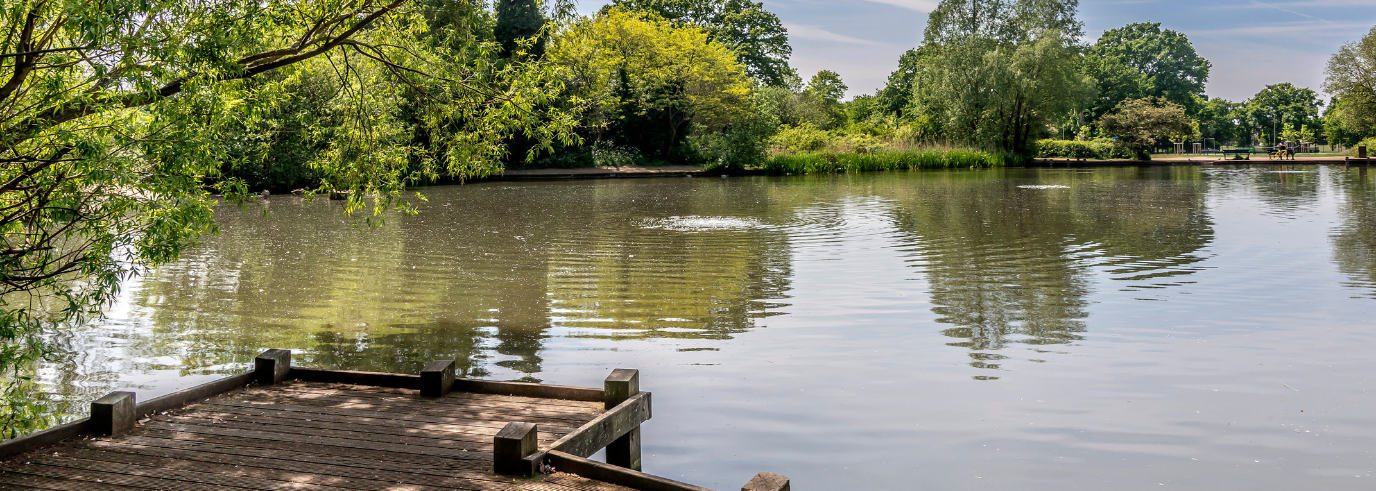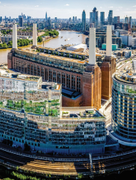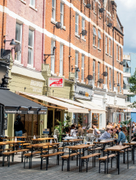
Switched on
London’s SW postcodes offer not only better value than many of their Capital counterparts, but also an identifiably different set of lifestyle choices.
30 September, 2021
The swathe of London below the gentle western curves of the Thames has achieved an extraordinary transformation in recent years. So much so that house hunters who would have previously barely clocked places like Balham, Brixton, Streatham, Tooting, and Wandsworth now clamour for homes in these revived urban areas.
Where students, artists and media folk once cherished SW London’s less polished streets and low housing costs, now a much wider range of house hunters are seeking out its fashionable haunts, discovering its more affordable nooks and crannies, and cherishing the wider streets and rolling green parks, which has reshaped the area’s housing market, retail, leisure facilities, pubs, restaurants and cafés. Parks have had a huge role to play.
Almost every area of SW London has a substantial green space and, in some cases, lidos too, including Brockwell Park near Brixton; Clapham, Streatham, Wandsworth and Tooting commons; Wimbledon Park and also Putney Heath – to name a few. And let’s not forget the colossal redevelopment of the formerly industrial riverside area of Nine Elms and its jewel, the former Battersea Power Station site, both of which were barely neighbourhoods until recently.

This area of the Capital has seen a huge increase in popularity among home hunters.
Despite several decades of change, SW London prices remain lower than many of its western and central London near neighbours. For example, the average price for an apartment in Chelsea is £1.4 million, with other SW areas boasting cheaper apartments (as shown right). House price differences are even more stark.
A terrace in Chelsea will set you back £4.3 million on average and a semi £8.3 million, but venture deeper into SW London and terraces in Streatham go for £660,00 and semis for £880,000.
These are averages and prices vary significantly based on location, local amenities, property layout and condition or size of garden. But it’s a good rule of thumb that property in somewhere like Brixton, despite being only 20 minutes by tube from Oxford Circus, can be approximately 30-40% less expensive than Fulham. No wonder so many people are venturing to SW London.
Rents offer a more complicated picture. The popularity of SW London among 20 and 30-somethings, driven by ‘must have’ areas like Brixton, has pushed up average rents. Although the pandemic has slackened demand among these renters and flattened out rent rises, a long-standing mismatch between the number of tenants on the hunt versus a lack of available stock has kept rents in line with many parts of West and even Central London.

Anything with a garden or some sort of outdoor space has been snapped up, particularly in Battersea and Clapham.
Esmee Jones, Lettings Director, South West London, says that since the first lockdown, she has seen the busiest property market she has experienced in her 21 years at KFH. Initially there was an influx of property met by plentiful pent up demand. However, in recent weeks the supply has far outweighed demand and as a result the overall stock levels in SW London have dropped considerably.
“Anything with a garden or some sort of outdoor space has been snapped up, particularly in Battersea and Clapham,” she says. “If you are being asked to work and live in your home, then outdoor space or an extra room is a must. People are spending less on commuting and socialising, and as a result have more to spend on upgrading their home. “People want more because they are spending more time at home. Consequently, rents for this kind of property have been rising fast, while studio and one-bedroom apartments without gardens have been less popular,” says Jones. “I can see this trend continuing for some time.” Assuming there are no more lockdowns this year, Jones believes the trickle of young renters returning to the capital as offices re-open is likely to swell to a throng in the coming months.
Immediately after the first lockdown her team noted that tenants were looking for shorter minimum rental contract periods of 12-18 months, compared to the standard average of 24 months – just in case Covid returned. Confidence in the market, however, has returned.
Coupled with the shortage of properties, tenants are now looking to make their offers more attractive, with longer tenancies of 24-36 months. The current challenge for renters and letting agents alike is that stock levels across SW London are down significantly compared to a year ago as properties begin to be snapped up again by returning young professionals and families looking to rent in popular school catchment areas. And while these trends may be temporary, Jones believes the pandemic has changed some aspects of the rental market for good as many people have readjusted their lives. “The longer Covid has gone on for, the more people have thought about changes they can make to the way that they live,” she says.
Back in the day it was all about Fulham, but it's shifted south of the river for twenty-somethings.
Lisa MacKenzie, Sales Director for South West London, says this area of the Capital has seen a huge increase in popularity among home buyers and therefore substantial growth for KFH too. “Most of SW London is really well known now so if you're a 20-something graduate with a good job you want to live in Clapham Common or Brixton, which are massive draws for first time buyers particularly if they’re being helped by the bank of mum and dad,” she says.
“They will either come in and rent straight away and then transition or use family money to buy immediately. Back in the day I guess it was all about Fulham, but it's shifted south of the river for this generation.” MacKenzie says that in Putney and Wimbledon purchasers tend to be older first-time buyers in their 30s, so they want green, open spaces, whereas the 20-somethings want the edginess of places like Brixton.
Many of KFH’s vendors, on the other hand, are couples with children approaching secondary school age who then move down the A3 corridor to Surrey or depart to Beckenham and Bromley to houses within the catchment area of a host of good schools.
“The ongoing gentrification of SW London along the Northern Line has been held up by Covid, but nevertheless it’s been slowly creeping and had reached Tooting Bec before the pandemic struck,” she says. “But it will take longer to get to Morden and Colliers Wood.” MacKenzie says the first six months of 2021 were the busiest she’s ever seen during her 30-year career in estate agency, and that the starkest change has been the creation of a two-tier market: properties with gardens or balconies, and those without. But now that the stamp duty sales funnel has begun to taper down, she expects the property market to return to a kind of normal by the end of this year.
“There was a time when everyone worried that a large number of people would ‘exodus’ from London, but I think many companies are now starting to rethink their working-from-home policies,” she says. “I worry that some people who left during Covid for a new life in the country in the expectation of commuting in occasionally to London might now get caught out. “But on the flipside that could drive a huge market for pied-a-terre properties next year both in the sales and rental markets.”
Find a property
Need a valuation?
Our local agents can provide an accurate valuation for your property.